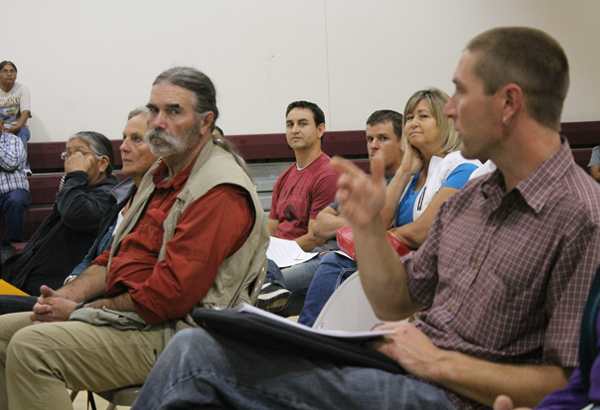Proposal to relax radon emission standards at the White Mesa Mill threatens public health
White Mesa, Utah—A lax new regulation proposed by EPA for the White Mesa Uranium Mill, the nation’s only operating conventional uranium mill, will threaten public health by eliminating enforceable emission standards for radon, reducing the amount of required reporting and monitoring, and delaying reclamation of the White Mesa Mill site.
Earlier this year, the Grand Canyon Trust sued Energy Fuels – the corporation that owns the White Mesa Mill – for emitting excessive radon in violation of Clean Air Act standards. The Trust’s suit also challenges the Mill for operating six instead of the maximum-allowed two storage ponds (called “impoundments”) that hold uranium mill waste.
“EPA’s decision to eliminate the numeric radon emission standard at the White Mesa Mill at a time when the Mill is violating the Clean Air Act is short-sighted and irresponsible” said Anne Mariah Tapp, Director of Energy at the Grand Canyon Trust. “The EPA can do better for the communities of southeastern Utah.”
Despite local concerns, the EPA denied requests to hold a hearing on the rule within reasonable distance of affected communities. Instead EPA held sparsely-attended meetings in Denver, Colorado, 450 miles away, but a convenient eight-mile drive from the Lakewood, Colorado office of Energy Fuels. The White Mesa Mill is located just three miles from the Ute Mountain Ute tribe’s White Mesa community, on Highway 191 between Bluff and Blanding, Utah. The Mill processes uranium from mines across the Colorado Plateau as well as radioactive waste imported from toxic sites across North America.
In a departure from its current regulations, EPA’s proposed new rule fails to require Energy Fuels to clean up uranium mill tailings during the mill’s lifetime, and fails to limit the number of tailings impoundments. The existing limit of two tailings impoundments was intended to ensure ongoing reclamation of uranium mill sites, and to prevent owners from abandoning highly polluted sites without remediation. The ongoing cost of the federal closure and remediation of the abandoned Atlas uranium mill outside Moab, Utah, for example, is expected to exceed $1 billion — a cost borne by taxpayers after the mill owners declared bankruptcy.
“The EPA is setting the White Mesa Mill up to be the next chapter in the toxic legacy of uranium mill contamination on the Colorado Plateau,” says Jennifer Thurston, Director of the Information Network for Responsible Mining, based in Norwood, Colorado.
In the absence of the EPA, the Trust will hold a public meeting at the White Mesa Community Center on Thursday, October 23rd at 6pm to discuss the new rule’s implications for public health and the environment, and to encourage local citizens to submit comments to EPA by the October 29th deadline. This will be the only community meeting held about the proposed rule in the Four Corners Region, ground zero for the toxic legacy of uranium mill contamination.
Additional info:
- EPA rulemaking and public comment period
- The Uranium mining “Legacy of Death” in southeastern Utah
- The Ute Mountain Ute tribe’s White Mesa reservation community is 3 miles from the Mill. The tribe has raised concerns about Mill operations for years.

